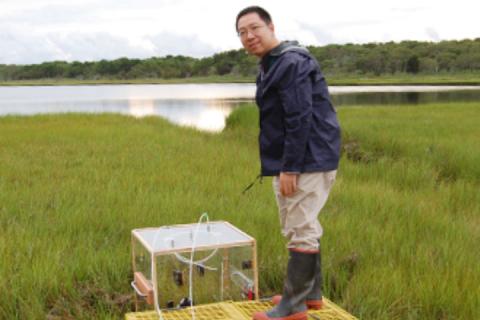
In the struggle to slow climate change, coastal wetlands are a critical asset—acre for acre, they can store up to five times as much carbon as rainforests. When wetlands are damaged or destroyed, they shift from being carbon “sinks” to being carbon sources that release greenhouse gases into the atmosphere. Unfortunately, wetlands are disappearing at an alarming pace, and decisions to develop, protect, or restore them are often made in the context of limited public resources. Trading wetlands carbon offsets on carbon markets is an exciting new approach to creating financial incentives for restoration and conservation.
Waquoit Bay National Estuarine Research Reserve launched Bringing Wetlands to Market to advance blue carbon science and guide policy. This first phase of this cutting-edge, collaborative research project examined the relationship between salt marshes, climate change, and nitrogen pollution and developed tools to leverage blue carbon stored in wetlands to achieve broader management goals.
A second phase of Bringing Wetlands to Market, Expanding Blue Carbon Implementation, built on this foundation to develop a model to assess and predict greenhouse gas fluxes and potential wetland carbon storage in New England.